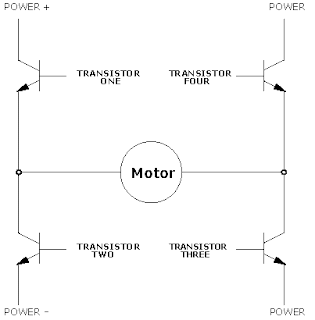IR Sensor Panel For A Line Following Robot.
Most of the time we use IR(infra red) to detect the line which the robot should follow.There are some IR sensors with IR LED in a single package specially made for robotics.They normally costs around Rs.50.And we can easily make a sensor panel using those modules.
There are two types of sensors in those packages.
1.Resistor type
2.Transistor type
In the resistor type, the sensor works as a resistor.It changes the resistance through the sensor with the color.So,we can detect the line using that fact.But the voltage through the sensor changes by a very small amount with the color.And that difference is not enough to take as an input to a PIC.Because it needs at least 3.3v to identified by the PIC as an input.So as a solution we use a set of op-amps to amplify that small voltage difference.LM324 is an IC which contains 4 op-amps in it.we can use that one or any other op-amp IC to this circuit.below is the circuit diagram for a single sensor.But in the diagram the sensor is shown as a Diode.
we can use 8 or more number of sensors as we wish.Because more sensors is better to build a very sensitive sensor panel.We can change sensitivity by changing the value of the 20k variable resistor.And can see if the input pin of the PIC is ON or OFF from the LED1.
In the Transistor type the sensor is a photo transistor.It acts as a normal transistor without a base pin.The current through the collector-emitter junction changes with the color.
we can use an op-amp circuit for these sensors also.But these transistors give a large voltage difference for colors like Black and White.So,if we don't like to use a op-amp circuit, we can use the emitter out directly as an input to the PIC.Here is the circuit,
You can use any type of sensors as you wish.But remember the more sensors is better for a very sensitive sensor panel.Normally we use about 8 or 10 sensors for a panel.But this can be changed with the task to complete.
This is a ready made sensor panel you can buy.But it is more valuable if you make it by yourself.
There are two types of sensors in those packages.
1.Resistor type
2.Transistor type
In the resistor type, the sensor works as a resistor.It changes the resistance through the sensor with the color.So,we can detect the line using that fact.But the voltage through the sensor changes by a very small amount with the color.And that difference is not enough to take as an input to a PIC.Because it needs at least 3.3v to identified by the PIC as an input.So as a solution we use a set of op-amps to amplify that small voltage difference.LM324 is an IC which contains 4 op-amps in it.we can use that one or any other op-amp IC to this circuit.below is the circuit diagram for a single sensor.But in the diagram the sensor is shown as a Diode.
we can use 8 or more number of sensors as we wish.Because more sensors is better to build a very sensitive sensor panel.We can change sensitivity by changing the value of the 20k variable resistor.And can see if the input pin of the PIC is ON or OFF from the LED1.
In the Transistor type the sensor is a photo transistor.It acts as a normal transistor without a base pin.The current through the collector-emitter junction changes with the color.
we can use an op-amp circuit for these sensors also.But these transistors give a large voltage difference for colors like Black and White.So,if we don't like to use a op-amp circuit, we can use the emitter out directly as an input to the PIC.Here is the circuit,
You can use any type of sensors as you wish.But remember the more sensors is better for a very sensitive sensor panel.Normally we use about 8 or 10 sensors for a panel.But this can be changed with the task to complete.
This is a ready made sensor panel you can buy.But it is more valuable if you make it by yourself.




.jpg)






